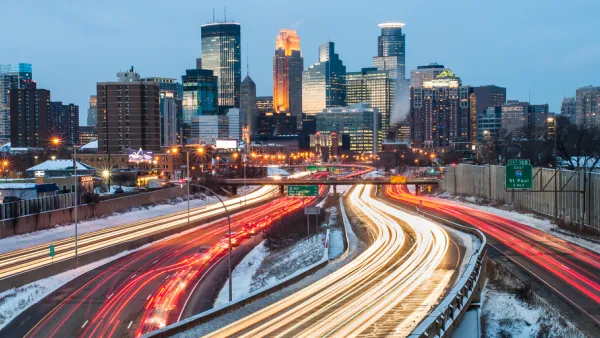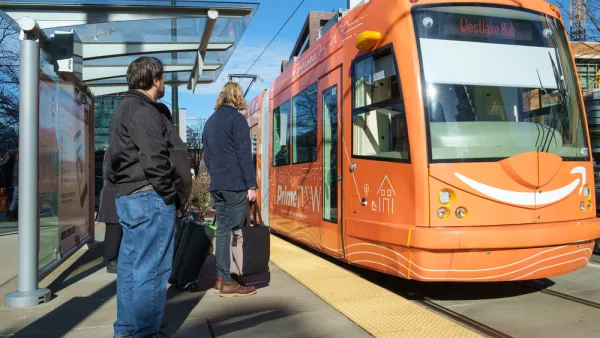Located less then 15 miles west of Downtown Minneapolis, Lake Minnetonka is already popular, but the 14 cities near the lake have created a regional coalition to improve the lake experience.
Fourteen cities near Lake Minnetonka in the Metropolitan Twin Cities area "want to entice more people to do, boosting tourism by rebranding the area as a year-round regional destination and revamping lakefront attractions," writes Kelly Smith. The plans would remake the towns on the lakefront in the model of "places like Key West, Naples, San Diego or Duluth."
Included in the plans:
- A scenic byway around the lake, so tourists can tour the entire lake.
- The Wayzata Lake Effect—a 10-year concept plan to improve access and amenities on Wayzata’s (considred the gateway to Lake Minnetonka) lakefront
- "An ambitious concept to boost access to its lakefront for everyone from pedestrians to boaters by adding docks, a pier and lake walk."
- And "new bike lanes, added temporary boat slips and a food vendor at a beach house that houses storage and public restrooms."
Not everyone is supportive of the plans to increase access to the lake. Mary Bader, a longtime resident and former City Council member is quoted an earlier article describing her resistance to the potential changes: “Do we need a massive redevelopment plan for what is basically a nice little town? No, I don’t think so, and I don’t think most people in Wayzata think so."
FULL STORY: Lake Minnetonka cities band together to rebrand, revamp lakefronts

National Parks Layoffs Will Cause Communities to Lose Billions
Thousands of essential park workers were laid off this week, just before the busy spring break season.

Retro-silient?: America’s First “Eco-burb,” The Woodlands Turns 50
A master-planned community north of Houston offers lessons on green infrastructure and resilient design, but falls short of its founder’s lofty affordability and walkability goals.

Delivering for America Plan Will Downgrade Mail Service in at Least 49.5 Percent of Zip Codes
Republican and Democrat lawmakers criticize the plan for its disproportionate negative impact on rural communities.

Test News Post 1
This is a summary

Test News Headline 46
Test for the image on the front page.

Balancing Bombs and Butterflies: How the National Guard Protects a Rare Species
The National Guard at Fort Indiantown Gap uses GIS technology and land management strategies to balance military training with conservation efforts, ensuring the survival of the rare eastern regal fritillary butterfly.
Urban Design for Planners 1: Software Tools
This six-course series explores essential urban design concepts using open source software and equips planners with the tools they need to participate fully in the urban design process.
Planning for Universal Design
Learn the tools for implementing Universal Design in planning regulations.
EMC Planning Group, Inc.
Planetizen
Planetizen
Mpact (formerly Rail~Volution)
Great Falls Development Authority, Inc.
HUDs Office of Policy Development and Research
NYU Wagner Graduate School of Public Service




























